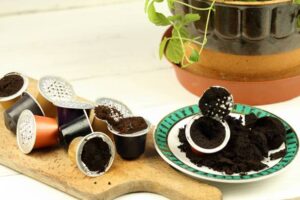Cuisinart coffee makers are known for their reliability, design, and ability to brew rich, full-bodied coffee. But even the best machines need regular maintenance. Over time, mineral deposits from water, residual coffee oils, and even mold or bacteria can accumulate inside your coffee maker, especially if it’s used daily. Cleaning your Cuisinart coffee maker isn’t just a good habit—it’s essential for keeping your machine running smoothly and ensuring every cup of coffee is as fresh and flavorful as the last.
Table of Contents
If your Cuisinart is starting to brew slowly, produce weak coffee, or develop a musty odor, these are signs it’s time for a thorough cleaning. The good news is that the process is simple, doesn’t take much time, and requires only a few household items. In this guide, we’ll break down how to clean your Cuisinart coffee maker thoroughly, whether it’s a basic model or one with more advanced features like a charcoal water filter or built-in grinder.
Understanding Why Cleaning Is So Important
Every time you brew a pot of coffee, natural oils from the grounds cling to internal parts of the coffee maker. Over time, these oils can go rancid and start to affect the taste of your coffee. In addition to coffee residue, minerals in your water—especially if it’s hard water—can leave behind limescale deposits that clog your machine and interfere with temperature and water flow. Worse still, if your machine is left wet or hasn’t been cleaned in a while, it can harbor bacteria or mold, especially in the reservoir and tubing.
Cleaning your Cuisinart coffee maker regularly helps prevent all of these issues. It ensures your machine operates efficiently and consistently produces coffee that tastes the way it’s supposed to—smooth, strong, and delicious.
Coffee Maker Cleaner & Descaler Tablets

- Machines-Compatible with Breville, Nespresso, Delonghi, Keurig, Philips, Ninja, and espresso machine
How Often Should You Clean a Cuisinart Coffee Maker?
How often you clean your coffee maker depends on how much you use it. If you brew coffee every day, it’s a good idea to clean the removable parts like the carafe and filter basket after each use. A more thorough deep cleaning, including descaling the inside, should be done about once a month. If your machine has a “Clean” light indicator, that’s a built-in reminder to descale and refresh the internal components.
Cleaning the Removable Parts
Begin by turning off the machine and unplugging it. Remove the carafe, the reusable or disposable filter, and the filter basket. Wash all removable parts with warm, soapy water. These parts often retain coffee oils and grounds, so be sure to scrub gently to remove any buildup. Some models come with dishwasher-safe components, and these can go on the top rack for convenience. Once cleaned, allow them to air dry completely or dry with a clean towel before reassembling.
If your Cuisinart model has a built-in grinder, be sure to remove any old grounds and wipe down the grinder components with a soft brush or cloth. Never immerse the grinder in water unless the manual specifically states it is safe to do so.
Descaling the Coffee Maker
Descaling is the process of removing mineral deposits from inside the machine. Most Cuisinart coffee makers have a descaling process that involves running a vinegar solution through the system. Start by filling the water reservoir with a mixture of one part white vinegar and two parts cold water. If your reservoir holds 12 cups, for example, add four cups of vinegar and eight cups of water.
Once the solution is ready, place the empty carafe back on the warming plate and start a brew cycle. If your machine has a “Clean” button, press it and let the machine automatically handle the process. If not, simply start a regular brew cycle and let it run halfway through. At that point, turn off the machine and let the solution sit inside for 30 minutes. This pause allows the vinegar to work through the internal tubing and break down the limescale.
After 30 minutes, turn the machine back on and complete the brew cycle. Pour out the vinegar-water solution, rinse the carafe, and refill the reservoir with fresh, cold water. Run two or three full cycles using only clean water to ensure any remaining vinegar is completely flushed from the system. This rinse is crucial because leftover vinegar can affect the flavor of your next brew.
Wiping Down the Exterior
While the descaling solution is working its way through the machine, take a moment to clean the outside of your coffee maker. Use a soft, damp cloth to wipe down the control panel, lid, and warming plate. If coffee has spilled or splashed on the surface, a mild dish soap solution can help lift the residue. Just be careful not to get moisture inside the electrical components or control buttons.
Replacing the Charcoal Water Filter
Many Cuisinart coffee makers come with a charcoal water filter located in the water reservoir. This filter helps remove impurities and odors from tap water, improving both taste and machine performance. Over time, though, the filter loses effectiveness and needs to be replaced—typically every 60 days or after 60 uses.
To replace it, first remove the old filter from the holder in the reservoir. Soak the new charcoal filter in cold water for about 15 minutes, then rinse it under running water for 10 seconds. Insert the fresh filter into the holder, snap it into place, and you’re done. Using filtered water and a clean filter also helps reduce the frequency with which you’ll need to descale the machine.
Maintaining a Clean Machine
Regular maintenance is key to keeping your Cuisinart coffee maker working like new. Rinse the carafe and filter basket after every use, and never let old coffee sit in the machine for hours. If your machine has a programmable timer, avoid setting it too far in advance, as water sitting in the reservoir overnight can lead to bacterial growth. Use filtered or bottled water when possible to minimize mineral buildup, and always store your machine in a dry, clean area when not in use.
For households that brew multiple pots of coffee each day, consider doing a quick rinse of the carafe and basket between brews and wiping down the warming plate, which can collect residue quickly. A small amount of regular care goes a long way.
FAQs About Cleaning a Cuisinart Coffee Maker
Can I use lemon juice instead of vinegar to clean my Cuisinart coffee maker?
Lemon juice contains citric acid and can be used in place of vinegar for descaling. However, it may require more thorough rinsing due to its strong citrus scent and taste. If you go this route, be sure to flush the machine with at least three cycles of clean water afterward.
Why is my Cuisinart coffee maker still slow after cleaning?
If you’ve descaled the machine and it still brews slowly, mineral buildup might be particularly stubborn. Try repeating the descaling process or using a commercial descaling product. Also, ensure the coffee basket and filter are clean and that the water reservoir is not clogged.
Is it okay to clean my Cuisinart with baking soda?
Baking soda is great for deodorizing and scrubbing the carafe or outer surfaces, but it’s not suitable for descaling the internal components. Vinegar or a commercial descaler is more effective for that purpose.
What does the “Clean” light mean on my Cuisinart coffee maker?
The “Clean” light is an indicator that it’s time to descale your machine. It usually activates after a certain number of brewing cycles or when sensors detect mineral buildup. Follow the vinegar-and-water method or use the automatic clean cycle if your model includes it.
Can I put the carafe and filter basket in the dishwasher?
Most Cuisinart carafes and baskets are top-rack dishwasher safe, but always refer to your model’s user manual to confirm. If you prefer, you can hand-wash them with mild dish soap and warm water.
Final Thoughts
A clean coffee maker is a happy coffee maker—and your taste buds will thank you for it. Keeping your Cuisinart coffee maker in great shape doesn’t require much effort, just a bit of consistency. With regular cleaning, both inside and out, your machine will continue brewing great-tasting coffee day after day. Think of it as a small act of care for the machine that helps kickstart your mornings. By taking just a few minutes each month to descale and sanitize, you’ll ensure every cup of coffee you make is as good as it should be—bold, smooth, and perfectly satisfying.






